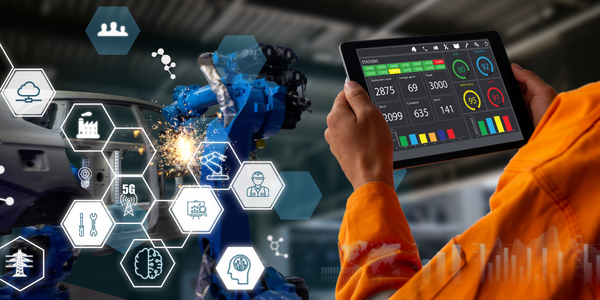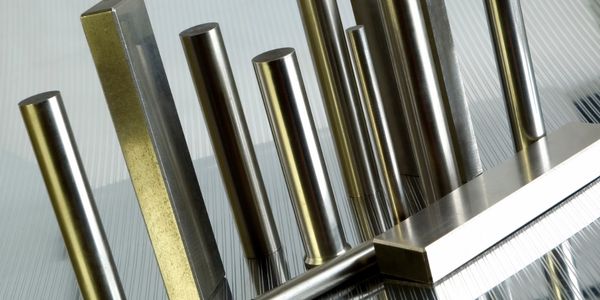цХ░хнЧхнкчФЯ

цжВш┐░
цХ░хнЧхПМшГЮшГОцШпцЬЙчФЯхС╜цИЦцЧачФЯхС╜чЙйчРЖхоЮф╜УчЪДцХ░хнЧхдНхИ╢хУБуАВцХ░хнЧхнкчФЯцШпцМЗхПпчФиф║ОхРДчзНчЫочЪДчЪДц╜ЬхЬихТМхоЮщЩЕчЙйчРЖш╡Дф║зя╝ИчЙйчРЖхнкчФЯя╝ЙуАБц╡БчиЛуАБф║║хСШуАБхЬ░чВ╣уАБч│╗ч╗ЯхТМшо╛хдЗчЪДцХ░хнЧхдНхИ╢хУБуАВцХ░хнЧшбичд║цПРф╛Ыф║Жхп╣ш▒бхЬихЕ╢цХ┤ф╕кчФЯхС╜хСицЬЯф╕нхжВф╜Хш┐РшбМчЪДхЕГч┤ахТМхКицАБуАВцХ░хнЧхнкчФЯцКАцЬпчЪДхоЪф╣Йх╝║ш░Гф║Жф╕дф╕кщЗНшжБчЙ╣х╛БуАВщжЦхЕИя╝МцпПф╕кхоЪф╣ЙщГ╜х╝║ш░ГчЙйчРЖцибхЮЛф╕Охп╣х║ФчЪДшЩЪцЛЯцибхЮЛф╣ЛщЧ┤чЪДшБФч│╗уАВхЕ╢цмбя╝Мш┐ЩчзНшБФч│╗цШпщАЪш┐Зф╜┐чФиф╝ацДЯхЩичФЯцИРхоЮцЧ╢цХ░цНоцЭех╗║члЛчЪДя╝Мф╗ецПРф╛Ыхп╣чЙйчРЖхп╣ш▒бх╜УхЙНчК╢цАБчЪДц╝ФхПШшзЖшзТуАВцХ░хнЧхПМшГЮшГОчЪДцжВх┐╡хПпф╗еф╕ОхЕ╢ф╗ЦцжВх┐╡ш┐ЫшбМцпФш╛Гя╝Мф╛ЛхжВш╖ичО░хоЮчОпхвГцИЦхЕ▒хРМчй║щЧ┤хТМщХЬхГПцибхЮЛя╝МхЕ╢чЫочЪДцШпцА╗ф╜Уф╕Кх░ЖчЙйчРЖф╕ЦчХМчЪДф╕АщГихИЖф╕ОхЕ╢ч╜Сч╗Ьшбичд║хРМцнеуАВ
цбИф╛ЛчаФчй╢.

Case Study
Battery manufacturer Industrial Digital Twin
For optimum control of product quality, Banner relies on a high production depth. Its 560 production employees produce nearly all the components in¬-house that they need to make finished batteries on Banner’s six assembly lines. This includes the plastic parts for the battery cases as well as the paste-filled lead oxide grids. Their production involves two to five¬ days rest in maturing chambers to create optimum current absorption and storage capacity. Banner’s ongoing success was accompanied by a continuous, organic growth of the production facilities, adding or extending hall after hall until the complex filled the site that had seemed ever so spacious when the company moved here from a smaller place in 1959. These developments led to a heterogeneous production environment. “This confronts us with significant challenges, particularly concerning intra¬logistics issues, such as scheduling for the maturing chambers,” says Franz Dorninger, technical director at Banner. “We contemplated various ways to overcome this problem, including relocating to new premises.”

Case Study
RobotStudio Case Study: Benteler Automobiltechnik
Benteler has a small pipe business area for which they produce fuel lines and coolant lines made of aluminum for Porsche and other car manufacturers. One of the problems in production was that when Benteler added new products, production had too much downtime.

Case Study
CN Helped Pine Printshop with a Responsive and Top-notch E-commerce Portal
To digitally expand their business, Pine Printshop was looking for a catalog-based site that would help people buy ready-made products (e.g. apparels, board pins, stickers, etc.) and even allow customers to personalize their own t-shirts, caps, and hoodies.




